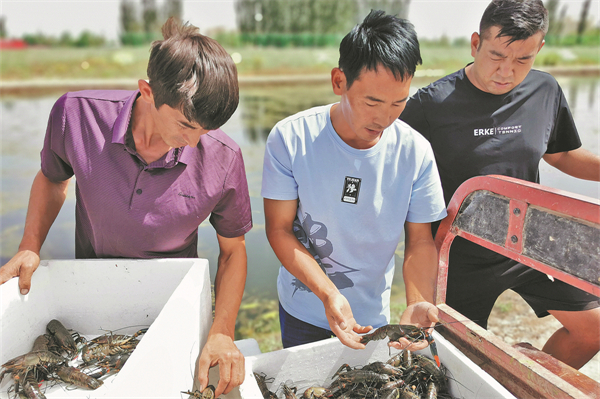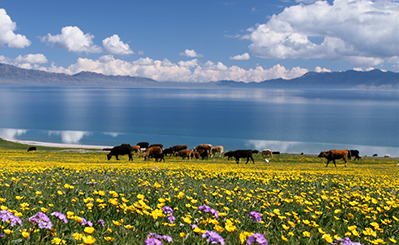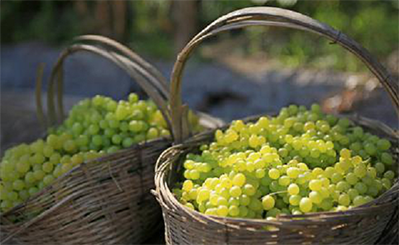Inland aquaculture swimming in demand

Breeders check the quality of freshwater aquatic products at a base in Makit county, Kashgar prefecture, Xinjiang Uygur autonomous region, in September. [MA CHENGZHONG]
With import ban on Japan, seafood industry seeks better alternatives in domestic sources
The Xinjiang Uygur autonomous region in Northwest China, located far from the sea, used to transport seafood products such as salmon, Australian lobster and South American shrimp from coastal areas.
Now, localized aquaculture has been achieved with melting snow and glaciers of the Tianshan Mountains, making it easier for the local population to have seafood in Xinjiang, forming a niche for local business operators with Chinese consumers' growing appetite for aquatic products.
Freshwater aquatic products are expected to become more popular in China following concerns about seafood due to nuclear-contaminated wastewater being discharged by Japan's Fukushima Daiichi nuclear power plant into the Pacific Ocean.
China has suspended imports of all aquatic products from Japan since Aug 24, according to the General Administration of Customs.
Reducing dependence on seafood imports is likely to generate higher demand for freshwater aquatic products and encourage the growth of more such businesses in inland China, industry experts observed.
In Kuqa, Xinjiang, crabs cultured at a reservoir were launched in the market about half a month in advance, thanks to abundant rainfall. With water from the snowy mountains, lush aquatic plants and rich plankton and crabs introduced from the coastal city of Dalian, Liaoning province, have grown well in Xinjiang.
"I have been farming crabs in Kuqa for more than 10 years and the products have been of high quality and favored by consumers. The crabs grow naturally and there isn't any human intervention," said Liu Shifang, a breeder in Kuqa.
Kuqa has also bred South American shrimp. The Xinjiang Fenghe Aquatic Products Breeding Cooperative introduced South American shrimp in April this year, which takes an average of 70 days from breeding to launching the products in the market.
"With saline-alkaline land and water, we have bred some 80,000 metric tons of shrimp so far and another 100,000 tons are about to launch in the market in October. The shrimp has been sold to nearby cities, but the supply isn't enough to meet the demand," said Jiang Shengguo, director of the cooperative.
Since June 2021, Jiang has invested more than 6 million yuan ($822,370) in testing the local environment and water, building greenhouses and ponds and trying to cultivate South American shrimp in freshwater. After two years of breeding, the breeding technology has become increasingly mature.
Business operators from nearby areas have also visited the cooperative to learn about the breeding technology. They watch videos of shrimp breeding on Chinese shortvideo platform Douyin, and hope to cooperate with breeders in Kuqa to cultivate shrimp themselves if opportunities emerge.
Currently, the cooperative in Kuqa has 45 breeding greenhouses and plans to build another 25 to bring the annual output of shrimp at the cooperative to nearly 400,000 tons.
The cooperative said it plans to continuously explore new breeding models and utilize advanced technologies. By breeding shrimp on a large scale, the cooperative aims to encourage more impoverished families to get involved in the business to help increase their incomes.
China stands as the world's largest consumption market for aquatic products. With the ongoing consumption upgrade trend and consumers' improved living standards, sales of aquatic products have surged in the country in recent years.
At the same time, in Southwest China's Chongqing municipality, the first batch of farmed South American white prawns was recently launched on e-commerce platform Freshippo, Alibaba's fresh-food chain. The local feeding base has achieved a large-scale, closed aquaculture by developing a closed ecosystem similar to the ocean.

Fishermen display their catch during a winter fishing festival at Ulungur Lake in Fuhai county, Xinjiang, in January. [MAO WEIHUA]
"For a long time, the sea shrimp available in the markets of Sichuan province and Chongqing were mainly transported from coastal cities such as Zhanjiang, Guangdong province, and Lianyungang, Jiangsu province. The transportation costs were high and the freshness of the shrimp was uncontrollable," said Li Duosi, purchasing manager of Freshippo in Chongqing.
In 2019, a local aquatic products company in Chongqing was founded. Chongqing Dazu Zero Antibiotics Aquatic Products Co Ltd added microorganisms to artificial seawater, effectively removing particulate matter such as feces and residual bait from the water, and forming a biological circulation system.
"The breeding base is expected to have a production capacity of 150,000 kilograms next year, and provide enough shrimp for more than 30 Freshippo stores in Sichuan and Chongqing," said Huan Guoxin, founder of the company.
Huan said the breeding costs of shrimp in Chongqing are about 30 percent higher than in coastal areas. He would like to build a reputation for the brand to supply shrimp in the long term.
In the past few years, Helan county in Yinchuan, Ningxia Hui autonomous region in Northwest China, has seized the opportunity of ecological protection and the high-quality development of the Yellow River basin to further utilize its aquatic resources.
Wang Xujun, general manager of Ningxia Xinming Runyuan Agricultural Technology Co Ltd, said the annual output of its premium fish has exceeded 750 tons. Founded in 2005, the company has developed different varieties, such as South American prawns and California perch.
With the development of advanced technologies, the company has seen growing profits and consumers have changed their perception that inland regions are unable to breed aquatic products.
"At the beginning, we didn't know the feeding methods and the death rate of the fish was high. We constantly explored different feeding methods and broke through many technical difficulties," Wang said.
The county first introduced a variety of South American prawns in 2012, successfully cultivating it. Later, the county continued to introduce seafood breeds that can be cultured in freshwater, including California perch, freshwater grouper, yellow croaker, river clams and spotted shrimp.
With abundant sunlight and convenient irrigation and drainage conditions, the moderate acidity and alkalinity of the water in Helan are suitable for the growth and breeding of fish.
In particular, the local saline-alkaline water can't be consumed by humans or livestock and is unable to be utilized by agriculture. The vast bulk of such water resources has been in a long-term idle state. Using saline-alkali water for aquaculture is one of the methods for developing the resource, the local government said.
By the end of last year, the county's aquaculture water area reached 3,886 hectares, and the output value of the fishery achieved 814 million yuan, according to the local government.
Helan has become the largest distribution center for aquatic products in Northwest China.
Some 70 percent of the total amount of freshwater products have been sold to neighboring regions, such as Gansu and Qinghai provinces and the Tibet autonomous region.
Next, the local government plans to support the development of a group of aquatic product processing enterprises through investment attraction and resource integration. The local government aims to cultivate those enterprises with featured and premium products and help further raise their market share and competence.
In addition, Ningxia Lanwan Ecological Agriculture Co Ltd, the largest breeding base of South American prawns in Northwest China, has seen its output value reach 750,000 yuan every four months, or one productive cycle.
After China optimized its COVID-19 response measures, the company said it has seen rising output and sales volumes. The company mainly sells its products to the local market of Yinchuan.
Wang Zhuoqiong in Beijing and Tan Yingzi in Chongqing contributed to this story.
 Attractions
Attractions Dining
Dining Culture
Culture